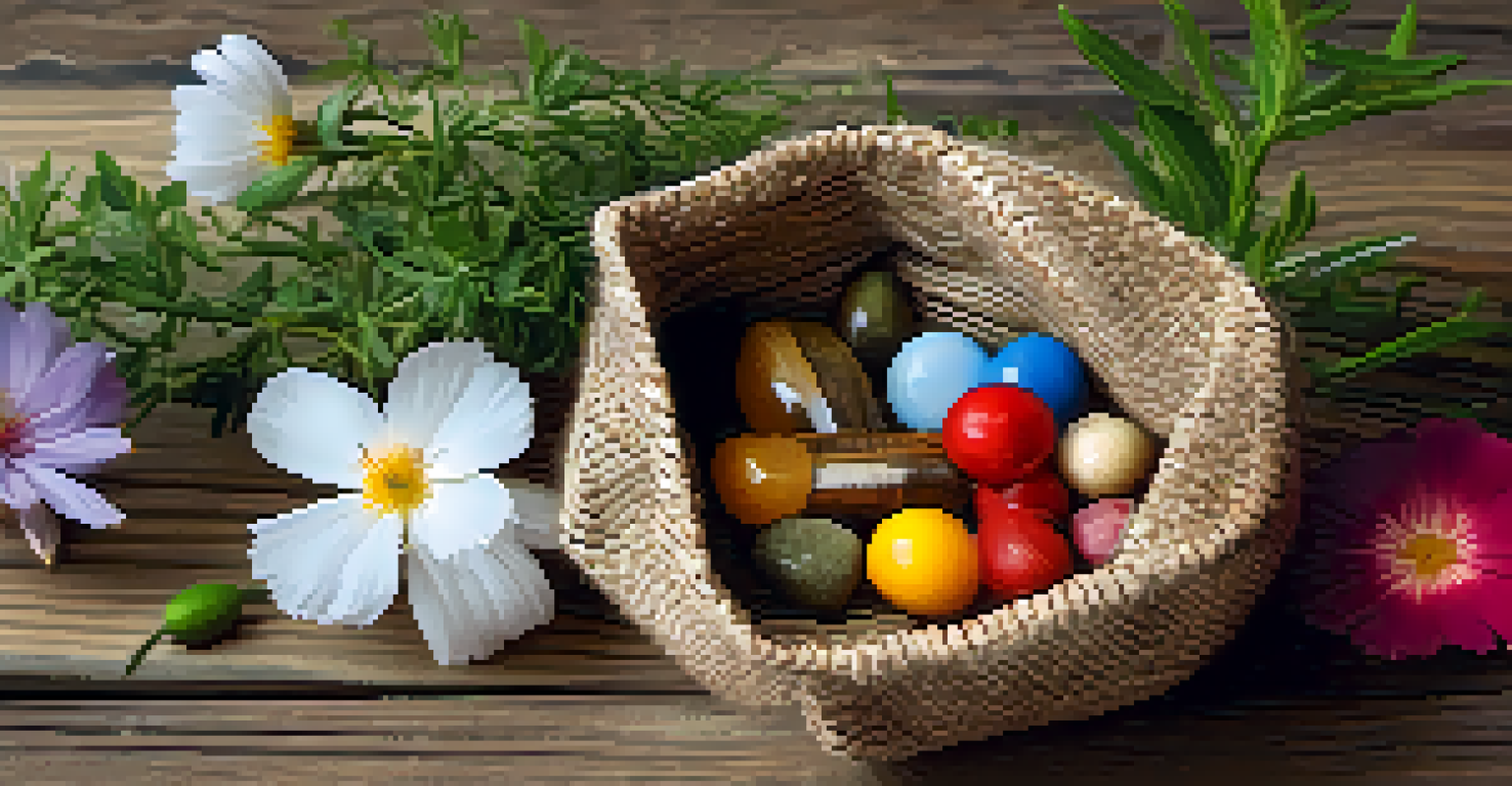Cultural Perspectives on Spirituality and Healing

Understanding Spirituality Across Cultures
Spirituality varies significantly across cultures, influencing how individuals connect with the divine. For example, in many Indigenous cultures, spirituality is intertwined with nature, viewing the earth as sacred. This connection fosters a deep respect for the environment, emphasizing the role of nature in healing and wellbeing.
Spirituality is not a religion; it is a way of life that connects us to the universe and to each other.
In contrast, Western cultures often approach spirituality through organized religion, focusing on doctrines and rituals. Here, spirituality may sometimes be seen as a personal journey, emphasizing individual belief systems over communal practices. This shift can lead to a more segmented understanding of spirituality, where personal experiences are prioritized.
These varied approaches highlight the rich tapestry of beliefs surrounding spirituality, revealing how cultural contexts shape our understanding of the divine. As we explore these differences, we also uncover the common threads that unite diverse spiritual practices in their quest for meaning and healing.
The Role of Rituals in Healing Practices
Rituals serve as powerful tools for healing in many cultures, acting as a bridge between the physical and spiritual realms. For instance, in African cultures, rituals often involve community participation, reinforcing social bonds while promoting individual healing. These gatherings create a shared space for emotional support and collective healing, showcasing the importance of community.

Similarly, in Asian cultures, practices such as Tai Chi or yoga incorporate ritualistic elements that promote both physical and spiritual wellness. These practices are not just exercises but are imbued with spiritual significance, encouraging a holistic approach to health. They emphasize the interconnectedness of body, mind, and spirit, allowing individuals to heal on multiple levels.
Spirituality Reflects Cultural Beliefs
Different cultures shape their understanding of spirituality, influencing healing practices and beliefs about wellness.
Understanding the role of rituals in healing offers insights into how different cultures perceive wellness. By participating in or observing these rituals, we can appreciate the depth of meaning they hold and their potential to foster healing beyond the individual.
Healing Through Traditional Medicine
Traditional medicine often embodies the spiritual beliefs of a culture, blending physical healing with spiritual practices. For example, Traditional Chinese Medicine (TCM) incorporates concepts like Qi (energy flow) and Yin-Yang balance, emphasizing the importance of harmony for overall health. This holistic perspective shows how physical ailments are often seen as manifestations of spiritual disharmony.
The healing power of art is a universal experience, transcending boundaries of culture and language.
In contrast, Native American healing practices frequently involve herbal remedies, prayers, and ceremonies that honor the spirit world. The focus here is on restoring balance and harmony within the individual and their environment, reflecting a deep respect for nature and spirituality. This approach illustrates the inseparable link between physical health and spiritual wellbeing.
By examining traditional medicine practices, we gain a deeper understanding of cultural approaches to health and healing. These practices not only reflect the beliefs of a community but also offer valuable lessons on the importance of integrating spirituality into healthcare.
Modern Spirituality and Health Trends
In recent years, there has been a resurgence of interest in spirituality within modern health trends, often blending traditional practices with contemporary wellness. Practices like mindfulness and meditation, rooted in ancient spiritual traditions, are now widely embraced for their mental health benefits. This shift reflects a growing recognition of the importance of spiritual wellness in overall health.
Yoga, once primarily seen as a physical exercise, is now often approached as a spiritual practice, emphasizing mindfulness and connection to the self. Many practitioners report enhanced wellbeing through this integrated approach, demonstrating the powerful role spirituality can play in healing. This trend highlights a growing desire for holistic health solutions that honor both body and spirit.
Rituals Enhance Healing Processes
Rituals play a vital role in healing, fostering community support and spiritual connection across various cultures.
As modern spirituality continues to evolve, it sparks conversations about the relevance of ancient practices in today's fast-paced world. By merging the old with the new, individuals are finding new pathways to healing that resonate with their personal beliefs and cultural backgrounds.
Cultural Perspectives on Mental Health and Spirituality
Mental health is increasingly recognized as a crucial aspect of overall wellbeing, with spirituality often playing a significant role in healing. In many cultures, mental health issues are viewed through a spiritual lens, where emotional struggles may be seen as a disconnection from one's spiritual path. This perspective offers unique insights into the causes of mental distress and potential pathways for healing.
For example, in some Eastern cultures, mental health is often approached through practices like meditation and prayer, which are believed to restore inner peace and balance. This contrasts with Western approaches that may rely more heavily on psychological interventions and medication. Understanding these differences can lead to more culturally sensitive mental health care, incorporating spiritual practices that resonate with individuals.
By exploring cultural perspectives on mental health and spirituality, we can foster a more inclusive dialogue around healing. Acknowledging the spiritual dimensions of mental health may enhance treatment outcomes and promote a deeper understanding of the human experience.
Spirituality in Healing Through Art and Expression
Art has long been a medium for expressing spirituality and healing across cultures. Many Indigenous cultures utilize art in rituals to convey spiritual beliefs, using creative expression as a form of communication with the divine. This artistic process not only serves as a healing tool but also preserves cultural heritage and identity.
In contemporary settings, art therapy has gained recognition as a powerful method for healing emotional wounds. By allowing individuals to express their feelings through creative outlets, art can facilitate spiritual exploration and personal growth. This approach underscores the idea that creativity can be a path to understanding oneself and one's spiritual journey.
Art as a Healing Expression
Art serves as a powerful medium for expressing spirituality and facilitating healing, highlighting the importance of creativity in wellness.
Recognizing the role of art in spirituality and healing opens up new avenues for therapeutic practices. By embracing creativity as a healing tool, we honor the diverse ways in which people connect with their spirituality and find solace in expression.
Interconnectedness of Spirituality, Culture, and Healing
The interconnectedness of spirituality, culture, and healing is evident in how each shapes our understanding of health. Spiritual beliefs often reflect cultural values, influencing how communities approach healing practices. This relationship highlights the importance of cultural context in understanding individual and collective health experiences.
For instance, in many cultures, the concept of community is crucial in the healing process. Healing rituals often involve family and community members, reinforcing bonds and shared beliefs. This collective approach to healing can enhance emotional support and foster resilience among individuals facing challenges.

As we explore the interconnectedness of these elements, we gain a deeper appreciation for the complexity of healing. By honoring cultural perspectives and spiritual practices, we can create more inclusive and effective health solutions that resonate with diverse communities.